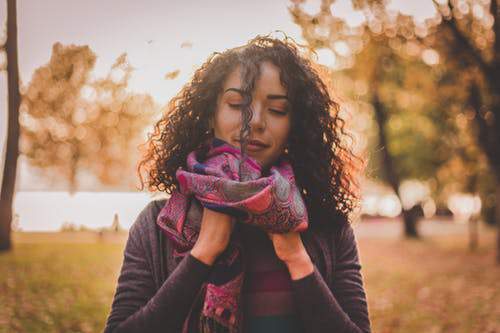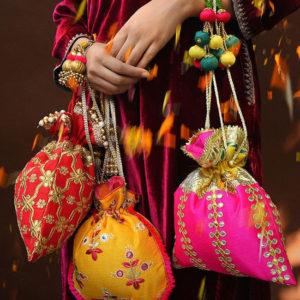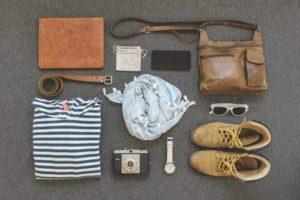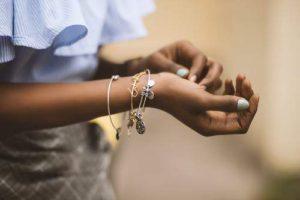Scarves come in a variety of shapes, sizes, and materials. They can have embellishments or fringe, and there are different ways to wear each type of scarf, depending on size and your style. Since there are so many scarf styles, it’s easier than ever to wear them to a variety of occasions.
There are particular scarf materials and styles and lend to different seasons and occasions. For example, a plaid wool scarf is best to be worn in the fall, a silk scarf in the summer, and a lightweight cotton scarf in the spring.
Let’s go over the most common scarf styles.INFINITY SCARF
An infinity scarf or loop scarves are relatively new on the scene and have gained popularity over the last few years for their ease of use. They are what I call “throw and go” scarves. You throw them on, loop them once, and go. Easy peasy. These come in some nice lightweight summer florals, madras check, or stripes for summer and heavier cotton, silk, and wool blends for winter in a variety of plaids, prints, and solids. Like their rectangular counterparts, they can also come in knitted versions, from lacy to chunky.BLANKET SCARF
A blanket scarf is a very large scarf, usually, square. As the name suggests, they are pretty large and maybe even look like you’re wearing a blanket. But don’t wear one that large, just think a little oversized. You will notice a lot of people wearing a blanket scarf in the fall as they have become trendy and the most popular print, of course, is plaid.
Don’t think you just have to stick with plaid, have fun with this oversized scarf and look for prints like checkered, tartan, or leopard. They come in a variety of colors, but most often they are muted tones as not to overwhelm the outfit.LONG SCARF
A long scarf or rectangular scarf, also known as oblong scarves, is probably the most popular scarf to wear these days. These long scarves can be worn loose, looped, or knotted in multiple ways. There are so many ways to wear a scarf like this in the spring, summer, fall or winter. Materials range from lightweight cotton to silk to wool, and a variety of blended materials. You can find them in solids, florals, prints, stripes, plaids and really anything you can think of. They also come in knitted versions, from lacy to chunky.SHAWL SCARF
Shawl and scarf have some come together, and the terms have become somewhat interchangeable because of the variety of scarf styles now available. A shawl will usually drape over your shoulders, arms and can warp your entire upper body. The most common shape is rectangular or square, and it should be large enough to cover the top half of your body.
If it’s smaller in size, then it’s probably just a scarf. These can also come in a variety of colors and fabrics. Shawl scarfs come in light airy fabrics for the summer and thicker warm fabrics for the fall and winter.SQUARE SCARF
Square scarves are less common these days and come in a variety of sizes from 16 to 60 inches. Smaller square scarves are called a neckerchief. These always remind me of flight attendants, with their bold colors tied around their neck, worn to bring some color or pattern to their otherwise one color uniform.
There is also the bandanna, a more informal type of small square scarf that is used for practical purposes during physical activity, like hiking. Both of these can also serve as a headscarf. Larger squares, like your classic Hermes, can be tied and worn in a variety of styles. Materials range from lightweight cotton to silk to wool, and a variety of blended materials. You can find them in solids, florals, prints, stripes, and plaids.PASHMINA SCARF
Authentic Pashmina scarves are made from the wool of the Kashmir Pashmina goat. These goats, found in the Himalayas, provide fine wool that is woven into beautiful and soft scarves that are very costly but can keep you very warm. Most of what you will find in the stores is a knock-off made of a more typical cashmere, a silk/pashmina blend, or even cotton.
Originally, Pashmina scarves were large rectangular scarves that could envelop the head, neck, and shoulders for modesty, warmth, or against the elements. Today, you can find them in medium or large squares or long rectangles. Many have a fringe element.




